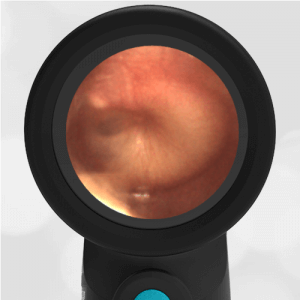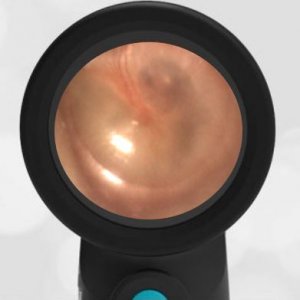
Acute Otitis Media
A 5-year-old male is brought into the pediatric clinic by his mother for evaluation of ear pain. The mother reports that three days ago the child developed a cough, runny nose, and congestion with a mild fever. She had been treating the symptoms with over-the-counter medicines. One day ago, the child began to complain about left ear pain. The child has a history of ear infections but has never needed ventilation tubes. The following image of the child’s ear is obtained with a Wispr digital otoscope.
What treatment is indicated?
The child has acute otitis media (AOM). Antibiotics should be considered
The child clearly has acute otitis media. The key diagnostic features of AOM include bulging of the tympanic membrane (TM), erythema (redness), and loss of all bony landmarks except the short process of the malleus. What’s interesting in this case is the presence of an air-fluid level. This suggests that as the inflammation in the middle ear space (behind the eardrum) developed, the air was trapped as the Eustachian tube prevented proper venting to the posterior nasopharynx. An air-fluid level can also be associated with a middle ear effusion (MEE). The difference between AOM and MEE is the presence of bulging. The bulging indicates increased pressure in the middle ear and therefore a non-functioning Eustachian tube.

Compare the images of AOM and MEE below. Both have air-fluid levels, but the MEE does not have bulging and the entire malleus is discernable.
- AOM
- MEE
Here is the complete video exam of the acute otitis media:
Complete exam video









































































































































































































